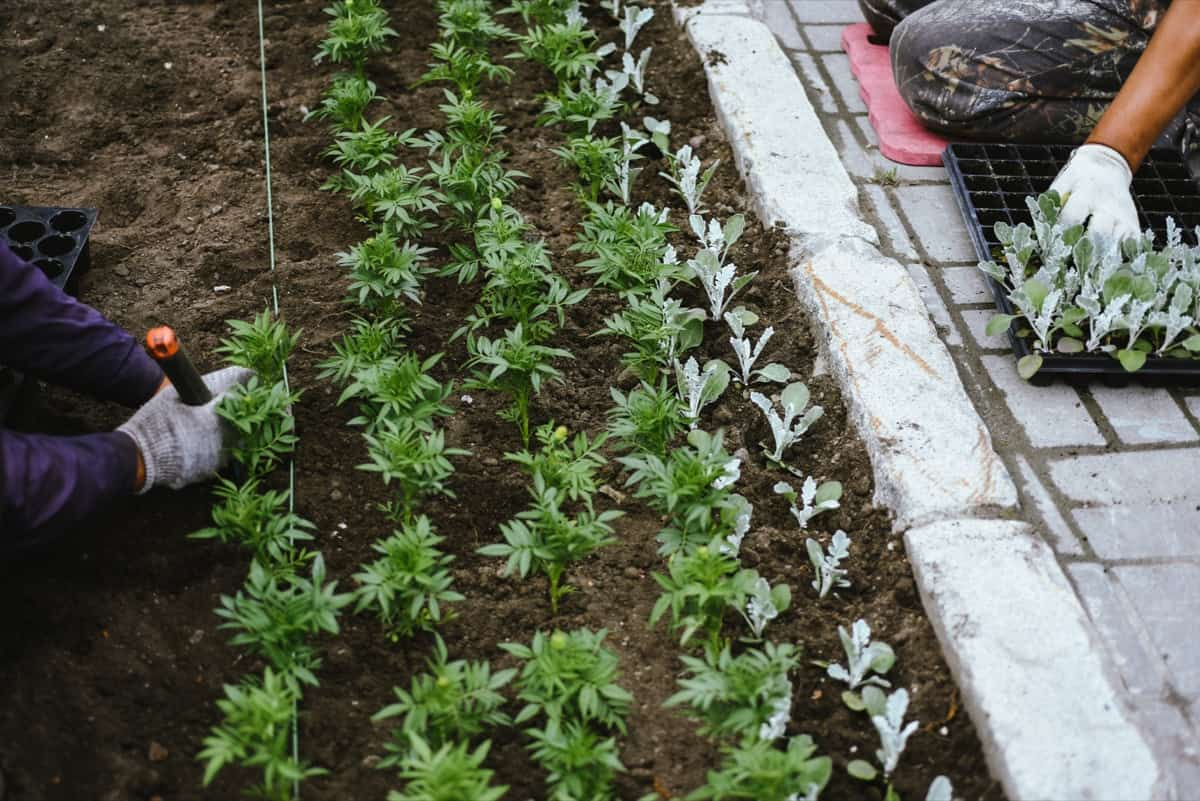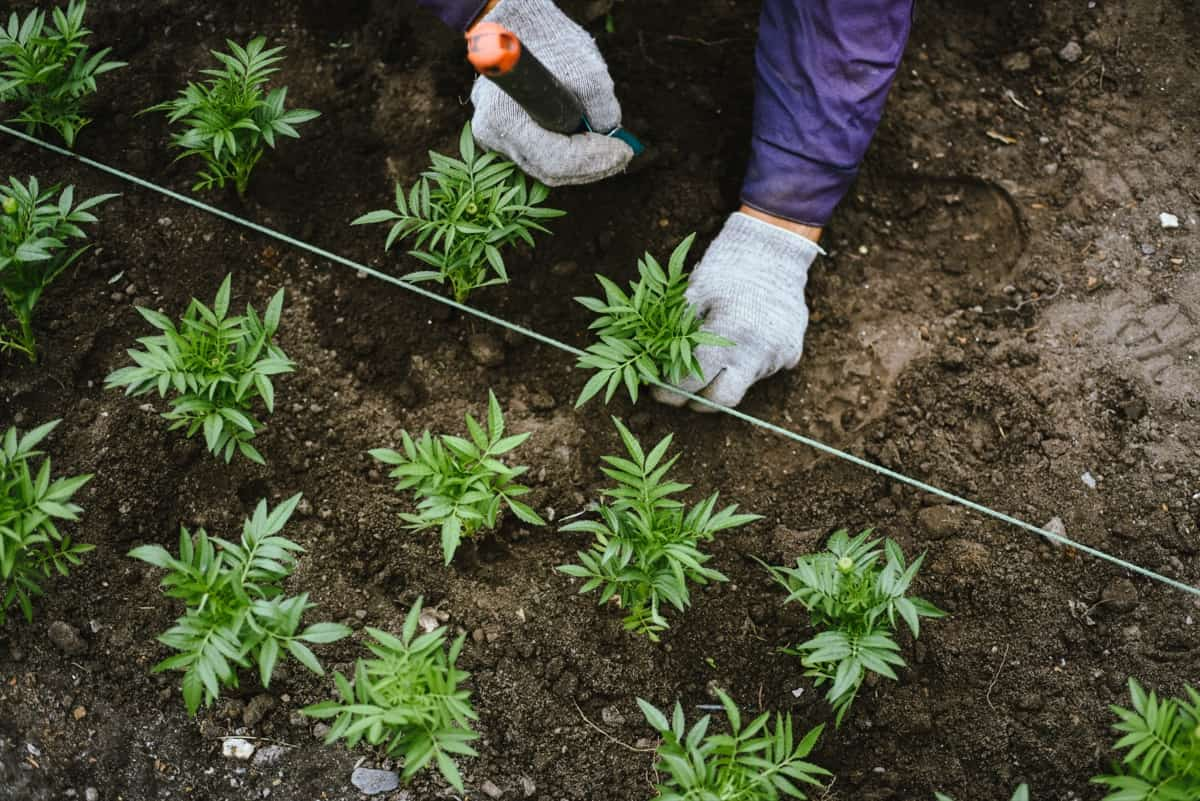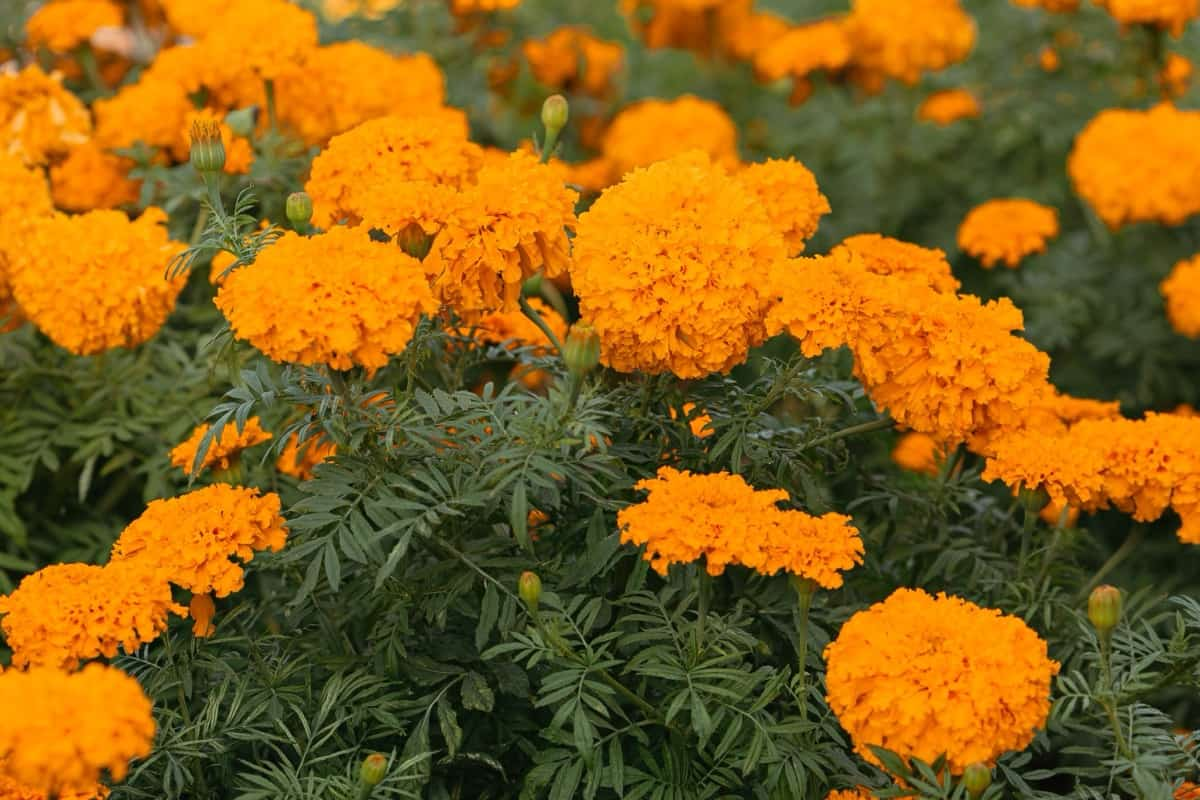Marigolds are popular among many garden enthusiasts with their vibrant colors and cheerful disposition. While starting marigolds from seeds or young plants is common, there’s another exciting way to grow these beautiful flowers from dried marigold blossoms. Whether you’ve saved marigold blooms from a previous season or received dried marigold flowers as a gift, you can easily transform them into a thriving garden in your home.

This comprehensive guide explores the fascinating world of growing marigolds from dried flowers, providing step-by-step instructions, essential tips, and valuable insights to ensure your success.
A Step-by-Step Guide to Growing Marigolds from Dried Flowers
Preparing the Soil for Marigold Seed Germination: Essential Tips and Techniques
To ensure successful marigold seed germination, start with well-draining soil rich in organic matter. Mix compost or peat moss into your garden bed or container. Marigolds prefer slightly acidic to neutral pH levels. The ideal soil pH for marigolds is between 6 and 7. Keep the soil loose for root development. Ensure the soil receives adequate sunlight, at least 6 hours per day. Before planting, water the soil thoroughly and let it settle. Avoid waterlogged conditions, which can rot the seeds. Properly prepared soil provides the ideal conditions for marigold seeds to sprout and thrive.
Choosing the Right Container or Garden Bed for Growing Marigolds from Dried Flowers
Select a container or garden bed that provides adequate space and drainage. If using pots or containers, ensure they have drainage holes. For garden beds, clear the area of weeds and rocks. Opt for a sunny location, as marigolds love sunlight. Ensure the soil receives adequate sunlight, at least 6 hours per day. Choose a well-ventilated spot to reduce the risk of fungal diseases. The size of the container or bed depends on the number of marigolds you wish to grow. Good spacing will allow for proper air circulation and help prevent crowding.
How to Dry Marigold Flowers for Seeds
To dry marigold flowers for seeds, start by harvesting mature, healthy blossoms. Remove any damaged or discolored petals. Bundle the flowers and put them upside down in a dry and well-ventilated dark area, away from direct sunlight, for about 2-3 weeks. Ensure good airflow to prevent mold.
As the flowers dry, seeds will naturally fall from the flower heads into a container placed underneath. Store the collected marigold seeds in a cool and dry dark place until you’re ready to plant them. Proper drying and storage of marigold seeds are crucial for successful germination and future growth.
Sowing Marigold Seeds: Proper Techniques for Planting and Spacing
How to plant dried marigold flowers? Plant marigold seeds in prepared soil at a depth of about ¼ inch. Space them 6-12 inches apart, based on the variety. Cover the seeds with garden soil and water thoroughly. Germination of marigold seed takes about 4-10 days. Label rows or pots for easy identification. The soil should remain consistently moist but not soggy. Maintain a temperature of 21-24°C for optimal germination. Utilize a light cover to retain moisture until seedlings emerge. Thin out weaker seedlings if overcrowding occurs, allowing robust plants to flourish.
In case you missed it: Are Marigolds Perennials or Annuals: Defining Perennials and Annuals

Marigold Seedlings Care: Light, Temperature, and Watering Requirements
Marigold seedlings thrive in full sunlight, so ensure they receive at least 6 hours of sunlight daily. Maintain a daytime temperature range between 21-24°C and slightly cooler nights. Water the seedlings consistently, keeping the soil evenly moist but not waterlogged. Use a gentle, fine spray to prevent soil disturbance. Overwatering can lead to root rot, while too little water can stress the seedlings. Striking a balance in light, temperature, and watering is crucial for their healthy development.
Nurturing Marigold Seedlings: Tips for Promoting Healthy Growth and Development
For growing marigolds from dried flowers, encourage healthy growth by thinning the seedlings once they develop true leaves, leaving only the strongest ones. Fertilize with a balanced, water-soluble fertilizer every 2-4 weeks. Pinch off the tips of young marigold plants to encourage bushier growth and more flowers. Regularly inspect for pests and diseases, addressing any issues promptly. Keep the soil weed-free to prevent competition for nutrients. By following these nurturing practices, you’ll support robust growth and ensure a bountiful display of marigold blooms.
Protecting Marigold Plants from Pests and Diseases: Effective Prevention and Control Measures
While growing marigolds from dried flowers, preventing pests and diseases in marigold plants is essential. Regularly inspect your marigold plants for signs of trouble, such as aphids or fungal issues. To prevent pests, use natural remedies like neem oil or ladybugs. Employ good gardening practices like proper spacing and sanitation to reduce the risk of diseases. In case of an infestation, consider organic pesticides as a last resort. Early intervention is crucial to prevent damage.
In case you missed it: Are Marigolds Perennials or Annuals: Defining Perennials and Annuals

Fertilizing Marigold Plants: Best Practices for Nutrient Supply and Balanced Growth
For growing marigolds from dried flowers, fertilize marigold plants with a balanced, water-soluble fertilizer during the growing season. Apply it every 2-4 weeks according to the package instructions. Ensure the N-P-K ratio is balanced, such as 10-10-10 or 20-20-20, to promote healthy foliage and abundant blooms. Avoid over-fertilizing, which can cause excessive foliage at the expense of flowers.
Pruning and Deadheading Marigolds: Enhancing Blooming and Prolonging Flowering Periods
Regularly deadhead faded flowers by pinching them off at their base while growing marigolds from dried flowers. This encourages new blooms by redirecting the plant’s energy. For bushier growth and to control leggy marigolds, pinch back the main stem’s tips when the plant is about 6-8 inches tall. Pruning and deadheading marigolds enhance their appearance and prolong their blooming period, ensuring a more extended display of colorful flowers.
Harvesting Marigold Seeds: Collecting, Drying, and Storing for Future Planting
- Gently pluck the dried flower heads from the plant. Be careful not to damage the seeds within. Use scissors or pruners if necessary.
- Remove the seeds from the dried flower head. You can do this by rubbing the flower head between your fingers, causing the seeds to fall out.
- Spread the collected seeds on a tray, paper plate, or screen in a well-ventilated, dry, and shaded area. Allow them to air dry for about two weeks. Stir or shuffle the seeds occasionally to ensure even drying and prevent mold.
- Once completely dry, gently separate any remaining chaff or debris from the seeds. A gentle winnowing or shaking process can help.
- Pack the cleaned seeds in a paper envelope or a breathable container, like a paper bag or an airtight glass jar. Label the container with the seed name and the date of collection.
- Store the seeds in a cool, dark place like a refrigerator. Properly stored marigold seeds can remain viable for several years.
In case you missed it: How to Start Marigolds in Pots: Best Practices for Growing From Seeds and Transplants

Conclusion
Let’s embark on this joyful journey and uncover all you need to know about transforming dried marigold flowers into a stunning garden that will brighten your days and impress your friends and neighbors.
- Feed Your Flock for Less: Top 10 Tips to Save on Chicken Feed
- Ultimate Guide to Ossabaw Island Hog: Breeding, Raising, Diet, and Care
- Hatching Answers: The Top 10 Reasons Your Chickens Aren’t Laying Eggs
- Eggs and Economics: Breaking Down the Cost of Raising Backyard Chickens
- Defend Your Greens: Proven Methods to Keep Iguanas Out of Your Garden
- Ultimate Guide to Cinnamon Queen Chicken: A Comprehensive Guide for Beginners
- Ultimate Guide to California Tan Chicken: Breeding, Raising, Diet, Egg-Production and Care
- Ultimate Guide to Marsh Daisy Chicken: Breeding, Raising, Diet, and Care
- 10 Types of Chicken Farming Businesses You Can Start for Profits